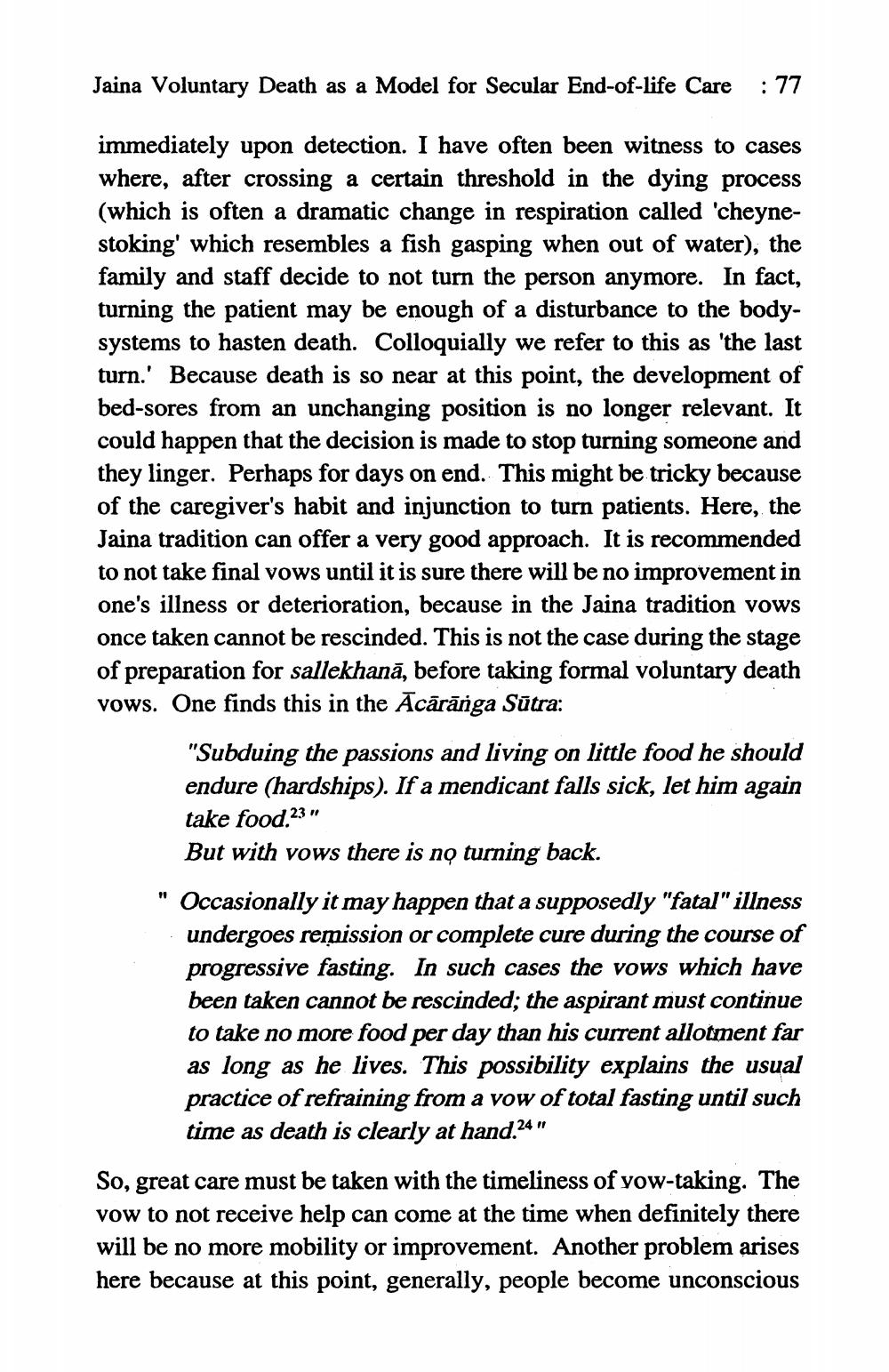________________
Jaina Voluntary Death as a Model for Secular End-of-life Care : 77
immediately upon detection. I have often been witness to cases where, after crossing a certain threshold in the dying process (which is often a dramatic change in respiration called 'cheynestoking' which resembles a fish gasping when out of water), the family and staff decide to not turn the person anymore. In fact, turning the patient may be enough of a disturbance to the bodysystems to hasten death. Colloquially we refer to this as 'the last turn.' Because death is so near at this point, the development of bed-sores from an unchanging position is no longer relevant. It could happen that the decision is made to stop turning someone and they linger. Perhaps for days on end. This might be tricky because of the caregiver's habit and injunction to turn patients. Here, the Jaina tradition can offer a very good approach. It is recommended to not take final vows until it is sure there will be no improvement in one's illness or deterioration, because in the Jaina tradition vows once taken cannot be rescinded. This is not the case during the stage of preparation for sallekhana, before taking formal voluntary death vows. One finds this in the Acarānga Sūtra:
11
"Subduing the passions and living on little food he should endure (hardships). If a mendicant falls sick, let him again take food.23"
But with vows there is no turning back.
Occasionally it may happen that a supposedly "fatal" illness undergoes remission or complete cure during the course of progressive fasting. In such cases the vows which have been taken cannot be rescinded; the aspirant must continue to take no more food per day than his current allotment far as long as he lives. This possibility explains the usual practice of refraining from a vow of total fasting until such time as death is clearly at hand.24 "
So, great care must be taken with the timeliness of vow-taking. The vow to not receive help can come at the time when definitely there will be no more mobility or improvement. Another problem arises here because at this point, generally, people become unconscious




